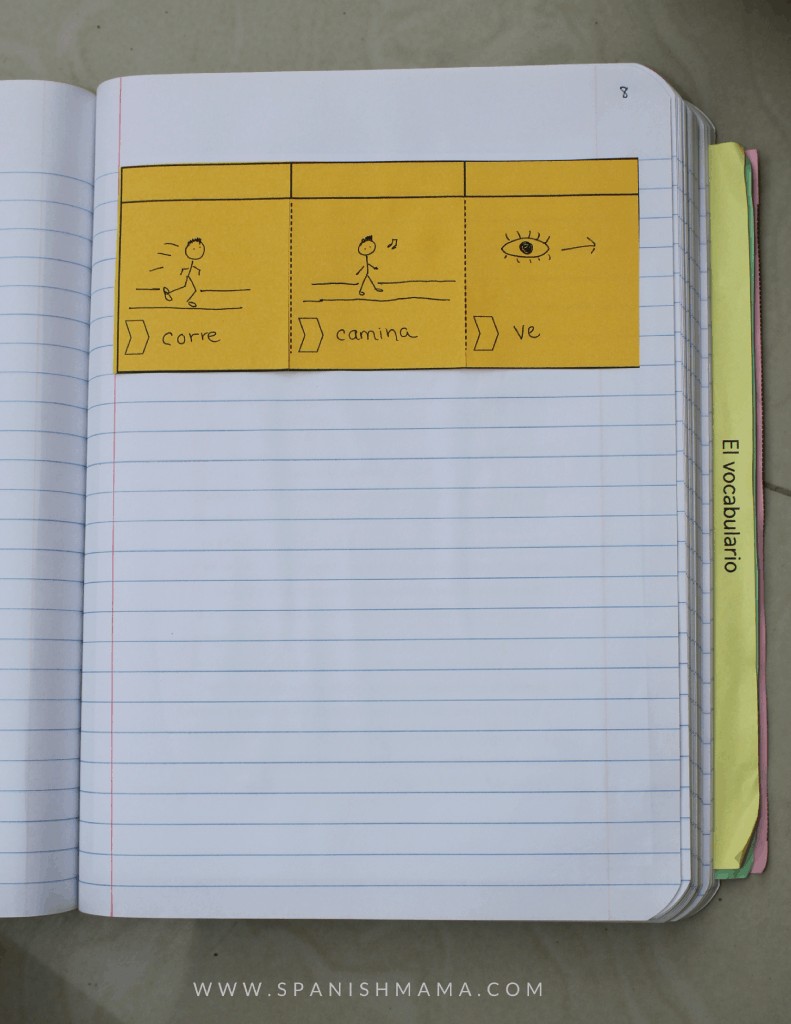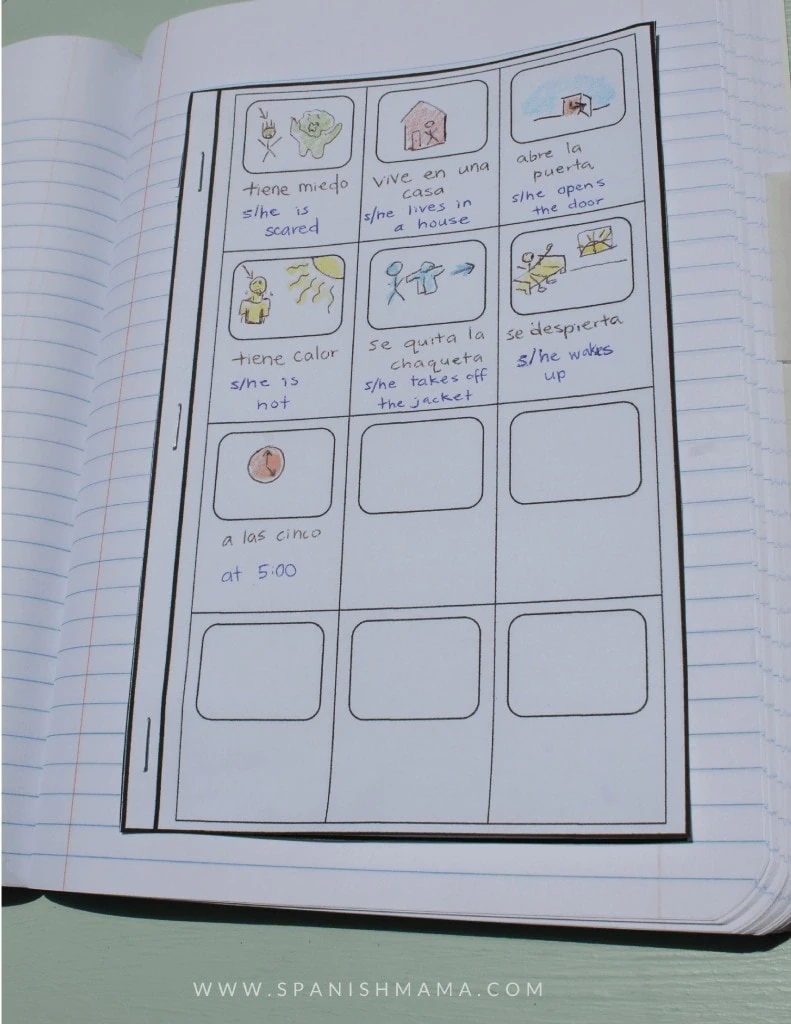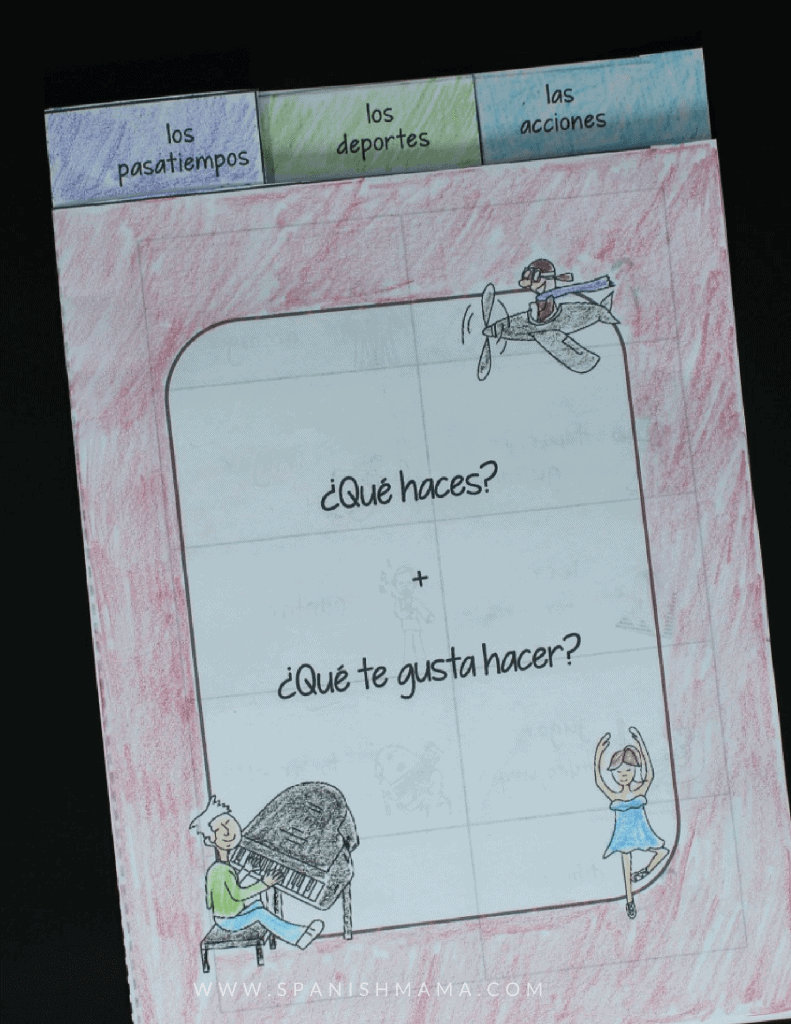Spanish Notebook Section 4: Vocabulary
As a new teacher, I gave an enormous vocabulary list at the beginning of each unit. Then I drilled and quizzed the life out of it– and still found that my students forgot most of it by the end of the year! Now, I always try to introduce vocabulary in context, and in much smaller amounts.
I have two main ways to record vocabulary. Most of the time, it’s in sets of three (pictured first, below) and the surrounding pages contain stories and input surrounding those phrases.
I also have a specific vocabulary section, where I keep little booklets by theme. These are a sort of catch-all for the vocabulary that comes up and needs a place to be written down. This is a reference section. I don’t really quiz the words, but just work them into the things we do all year. Some are not necessarily high-frequency in the scheme of the Spanish language, but pertinent to the students’ daily lives (like ordering food at a restaurant or classroom objects).
When I introduce new phrases, I usually do so in sets of three, and as part of a story (TPRS® style). The students copy the phrase, sketch it, and define it in English underneath. I like this because at-a-glance, everything is still in Spanish. If we do anything with the vocabulary, that work goes on the page, below the flaps. You could just have the students draw boxes of three, but the extra step of flaps make the students pause a little longer on the phrases, and signals a new set. (We put the story on the next page spread.)
With booklets like this, I often have the students record the language as it come up, over the year. It eventually gets organized because of the booklet, but I don’t have to do a specific unit that covers these basics.

You can find most of my notebook pages for sale, or as a free download. I try to keep the prices reasonable if you just want to grab one or two.
If you want to go ahead and purchase everything I’ve made, you save 20% AND get access to everything I add, in the future!













